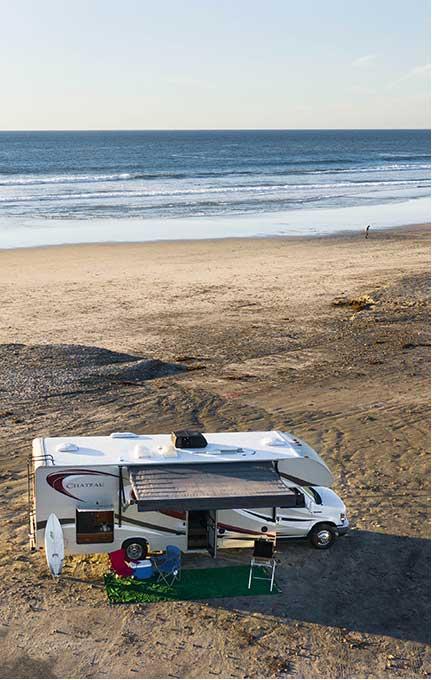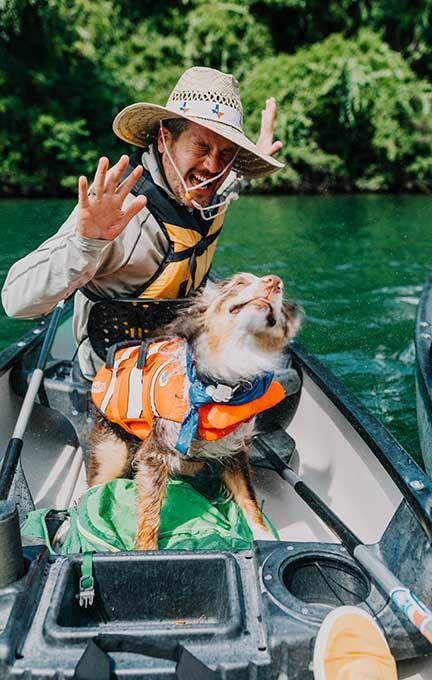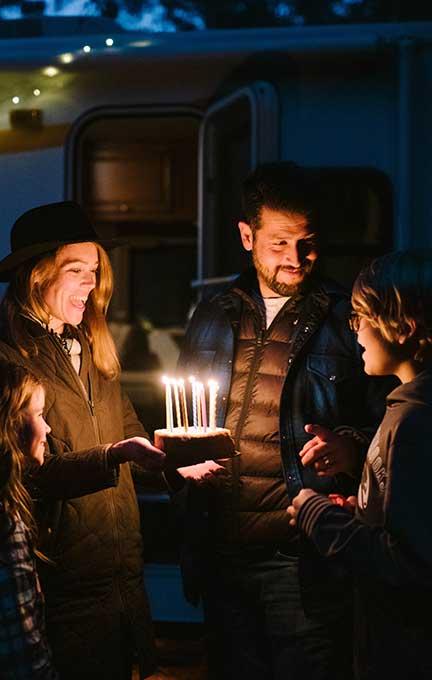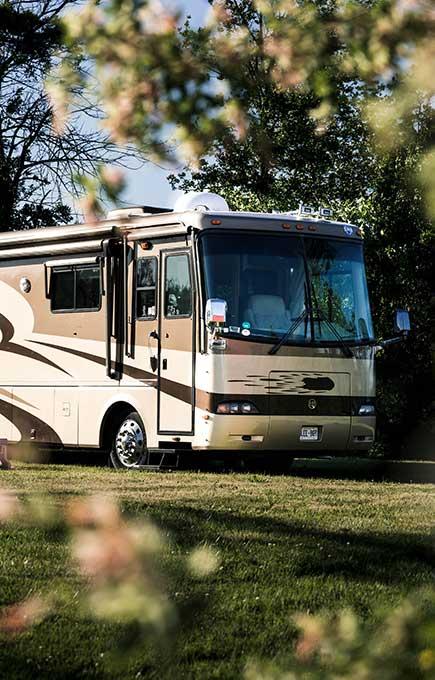For as long as humans have walked the earth, we’ve gathered around the campfire to share stories and songs as a way of connecting. Not only does this ancient tradition create space for imagination and creativity, but it’s a way of sharing our history and culture across generations—from ghost stories and mythological tales, to cautionary stories and cultural fables.
In modern times, family storytelling around the campfire might look like a parent or grandparent recounting their past to their children, a child sharing about their dreams, someone talking about a relative who has since passed away, telling stories about the stars, or reading from a book of tales. As for songs, families might sing an old favorite or come up with something new to sing.
RVs For Rent Near You
Below, we share some tips for cultivating a culture of campfire storytelling and song-singing that brings families together. Plus, we rounded up some resources for finding enough songs and stories to last until the final log burns out.
Tips for Telling Campfire Stories
1. Know Your Audience
Choose a story that suits the age and interests of your audience. You don’t want to tell the scariest ghost story to a group of youngsters, for example. Any good storyteller will also gauge the mood of the audience: funny or lighthearted stories for a relaxed crowd, and mysterious or thoughtful tales if everyone is feeling more introspective.
2. Set the Scene
Use your environment—like the crackling of the fire, the snapping of a twig in the distance, and the shadows of the night—to incorporate your setting and immerse your audience into the story. Be as descriptive and detailed as you can to build an imaginative atmosphere.
3. Use Body and Voice
Your voice is your best tool for storytelling. As the story evolves, so will your voice. Vary your tone, volume, and pitch to match each scene. Speak softly for suspense, loudly for action. Try incorporating different voices for different characters, and different sound effects like footsteps, wind, or a creaky door. The same goes for using your body: gestures, facial expressions, and acting out actions can make your story more compelling. Remember to make eye contact.
4. Pace the Story
Start slowly, use pauses to build anticipation, and vary your speed to draw your audience in. Every story builds to a climactic moment with action, tension, and stakes. The climax should be the most dramatic scene in the story, and then the resolution/conclusion ties things together.
5. End with Impact
Many campfire stories end with a lesson learned, a moral, a twist, or a haunting scene that will leave a lasting impression. If your audience remembers it, they’ll be more likely to tell it to another campfire circle in the future—and thus, the story lives on.
6. Have Fun
Storytime should be fun for everyone—the storyteller and the audience. Loosen up, let your enthusiasm catch on, don’t take yourself too seriously, and be willing to adapt as needed. And remember to give everyone a chance to engage and interact!
Different Kinds of Campfire Stories
- Personal anecdotes draw from your life experiences. These are stories of things that happened to you, family, or friends. It’s easy to segway from one person to another.
- Mythological tales are often based on religion or spirituality, featuring supernatural characters like gods, demigods, or other mythical creatures. Examples include the creation of the world and Greek mythology.
- Historical legends and folk tales are types of stories passed down through generations, such as a heroic deed, the legend of a lost continent, or the tales of Bigfoot.
- Ghost stories are fiction (unless you’ve actually seen a ghost) and feature a ghost, like the phantom ship or a haunted house.
- Cautionary tales like the boy who cried wolf or the man who ignored the elders teach a lesson and warn listeners of danger.
Campfire Story Inspiration
Need some storytelling inspiration? Below are a few resources for all kinds of scary, funny, and informative stories.
- Reader’s Digest cataloged 18 classic campfire stories that you’ve probably heard of, from the story of the girl with the ribbon around her neck to a hilarious tale of two coyotes who get into an argument.
- Campfire Stories Vol. I and Campfire Stories Vol. II collects stories from writers like Bill Bryson, John Muir, Terry Tempest Williams, and other diverse voices who’ve penned literature about the National Parks.
- Ready for a spine-chilling tale? Campfire Ghost Stories includes 50 legends, myths, and tales that will get your heart racing. Read with caution.
- Coghlan’s Fireside Story Dice is a game for adults and kids alike to encourage crafting epic tales. Roll the dice and come up with a story based on the symbols.
- The Campfire Stories Deck comes with 50 illustrated cards—25 characters and 25 actions—that you use as prompts to make up a story. There’s even a collaborative approach to get the whole group involved.
Campfire Song Inspiration
Singing songs is another form of telling stories but with music. Whether you pack a guitar or warm up your windpipes, like stories, songs can travel with you anywhere. Here are a few places to get inspiration:
- Scout Songs is a database of dozens of Girl Scout and Boy Scout songs, like Alice the Camel, Down By the Bay, and Home on the Range. If you forgot your old camp songs and want to teach them to your kids or friends, this is the place for you.
- Impress your audience or play as a band using the Campfire Songs for Acoustic Guitar book, with 25 classic cowboy tunes like On Top of Old Smoky and Red River Valley.
- Use this songbook from Tamarack Camps to reignite some nostalgic memories from summer camp—or recreate the summer camp experience you never had.
- It’s hard to learn a song without the music, so here’s a kid-friendly campfire songs playlist on YouTube that you can learn as a family.
Telling stories and singing songs around the campfire is about creating a shared experience, where the boundaries between reality and imagination blur, and everyone is drawn into the magic of the moment. Now that you have a guide to storytelling, pick out an RV for the trip.








